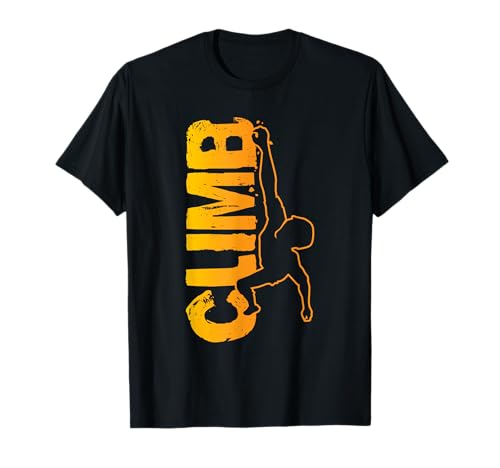Ready to conquer vertical challenges with gritty fingertips and steely resolve?
Rock Climbing isn’t just a battle against gravity; it’s the thrill of embracing adventure equipped for victory!
Strap in, chalk up, and let’s ascend through the ultimate rock climbing gear checklist.
It’s not just climbing – it’s a lifestyle!
If you’re into podcasts, we’ve curated the best rock climbing podcasts for you to enjoy.

For Rock Climbers:
- Climbing Shoes
- Harness
- Helmet
- Chalk and Chalk Bag
- Belay Device
- Carabiners
- Quickdraws (for sport climbing)
- Rope (for outdoor climbing)
- Crash Pad (for bouldering)
- Personal Anchor System (PAS)
- Water Bottle
For Coaches and Teams:
- First Aid Kit
- Training Manuals and Guides
- Climbing Guides (for outdoor climbing)
- Portable Hangboards (for strength training)
- Team Uniforms or Gear
For Facilities:
- Climbing Walls (indoor facilities)
- Bolts and Anchors (outdoor routes)
- Mats (for bouldering areas)
- Ropes and Quickdraws (for indoor leading)
- Belay Devices
- Climbing Holds
- Rest Area
- Locker Rooms
- Equipment Rental Desk
Table of Contents
Equipment for Rock Climbers
#1 Climbing Shoes

Climbing shoes are vital for securing footholds and enhancing precision on the rock. Designed with a snug fit and sticky rubber sole, they enable climbers to navigate even the smallest ledges and crevices.
#2 Harness

A harness is a safety must-have, securing a climber to the rope during ascents and descents. Its adjustable straps and gear loops provide a balance of comfort and functionality while climbing.
#3 Helmet
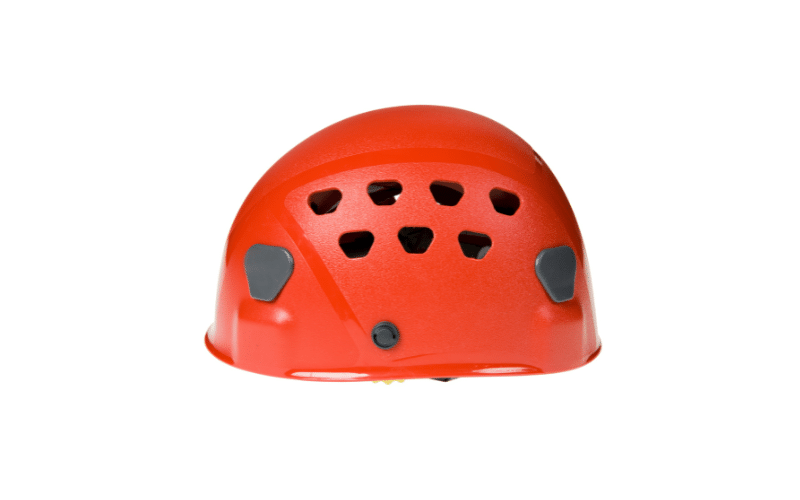
Climbing helmets protect against head injuries from falling debris or in case of a fall. They are essential for minimizing the risk of serious accidents, ensuring safety on the rock.
#4 Chalk and Chalk Bag
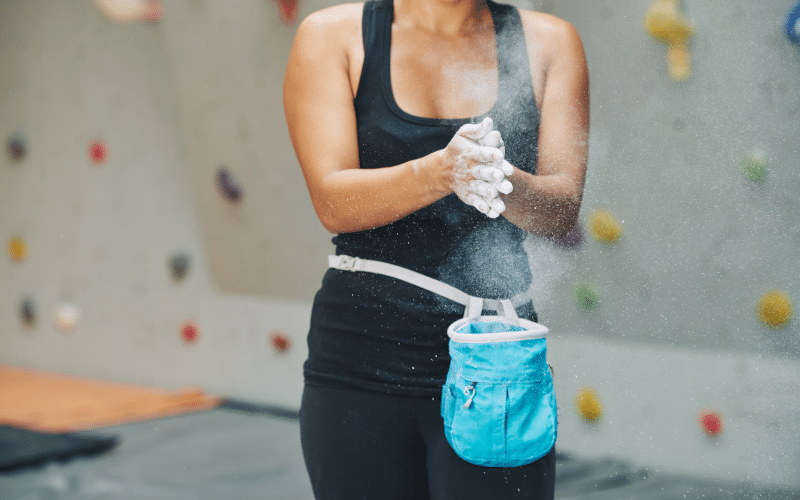
Chalk absorbs moisture from hands, improving grip on the rock. A chalk bag keeps your supply within reach, essential for maintaining reliable hand traction during a challenging climb.
#5 Belay Device

A belay device is used to control the rope during climbing, playing a crucial role in fall protection and descent management. Its design allows for safe and efficient belaying techniques by the climber or a partner.
#6 Carabiners
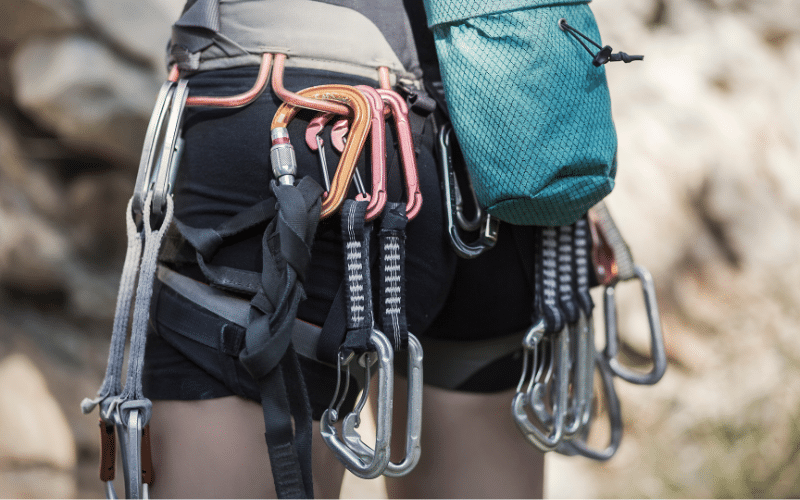
Carabiners are metal loops with spring-loaded gates, instrumental for attaching ropes, anchors, and gear. Their reliability and versatility are indispensable in creating secure climbing systems.
#7 Quickdraws (for sport climbing)

Quickdraws connect the climbing rope to bolt anchors on a route, enabling safer and more efficient sport climbs. They are essential for reducing rope drag and securing progress on the wall.
#8 Rope (for outdoor climbing)
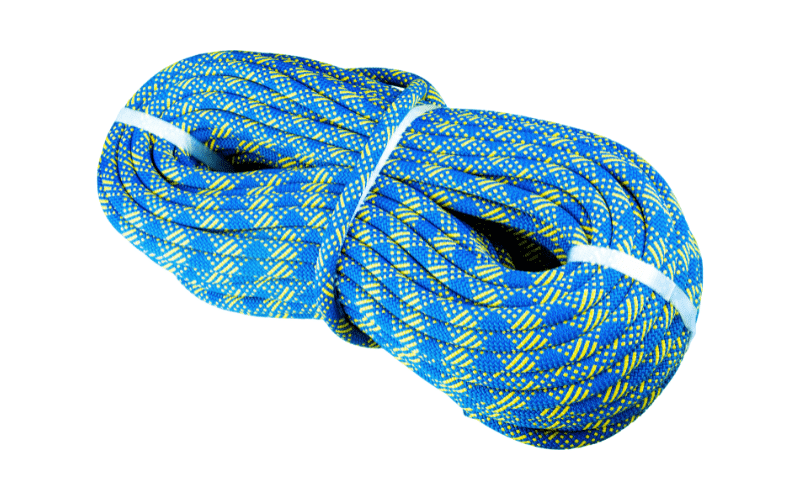
Climbing ropes are the lifelines for outdoor climbers, designed to absorb the energy of a fall and help with rappelling. They come in various lengths and thicknesses, tailored to different climbing styles and needs.
#9 Crash Pad (for bouldering)

Crash pads provide a cushioned surface to land on when bouldering, reducing the risk of injury from falls. They are essential for safe practice in an environment without ropes.
#10 Personal Anchor System (PAS)
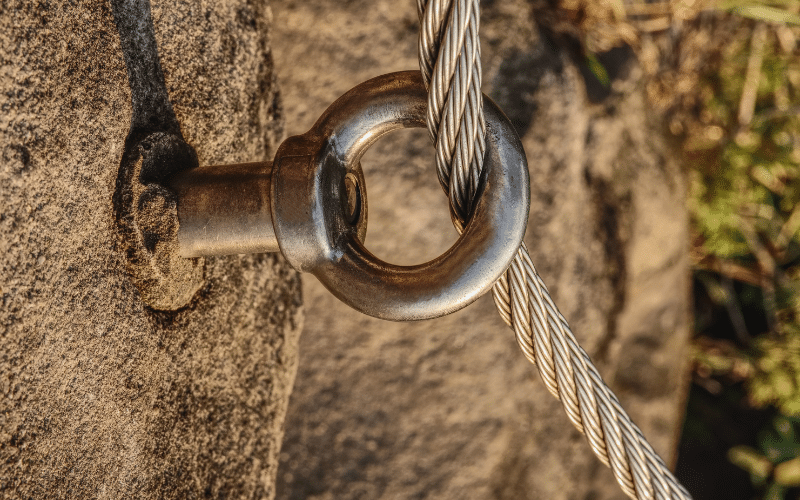
A Personal Anchor System offers a secure and adjustable connection to an anchor point. It’s an essential safety tool for multi-pitch climbs, cleaning routes, and rappelling.
#11 Water Bottle
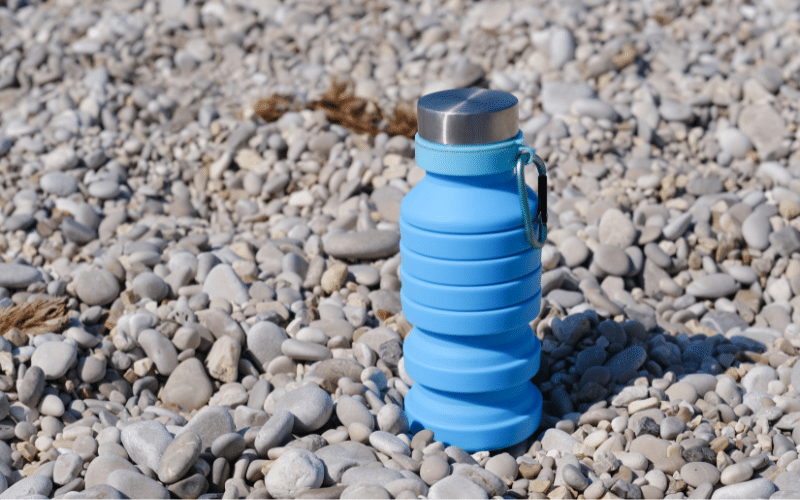
Hydration is crucial during long climbs to prevent fatigue and maintain concentration. A water bottle is an essential item, ensuring climbers stay hydrated throughout their adventures.
Equipment for Coaches and Teams
#1 First Aid Kit
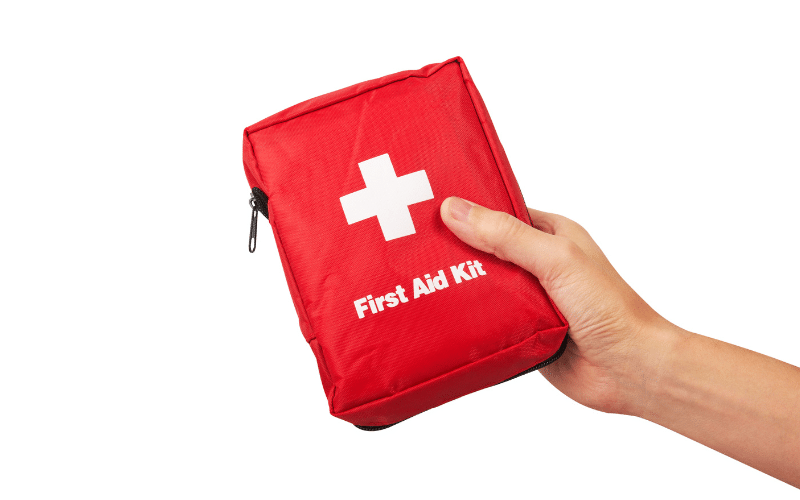
A first aid kit is imperative for coaches and teams to manage minor medical incidents swiftly. Stocked with bandages, antiseptics, and basic tools, it allows for immediate treatment of scrapes or sprains, ensuring the well-being and quick recovery of climbers.
#2 Training Manuals and Guides
Training manuals and guides are indispensable resources for coaches, providing structured programs and climbing techniques. These materials serve to educate and improve team performance, fostering skill development and safety awareness among climbers.
#3 Climbing Guides
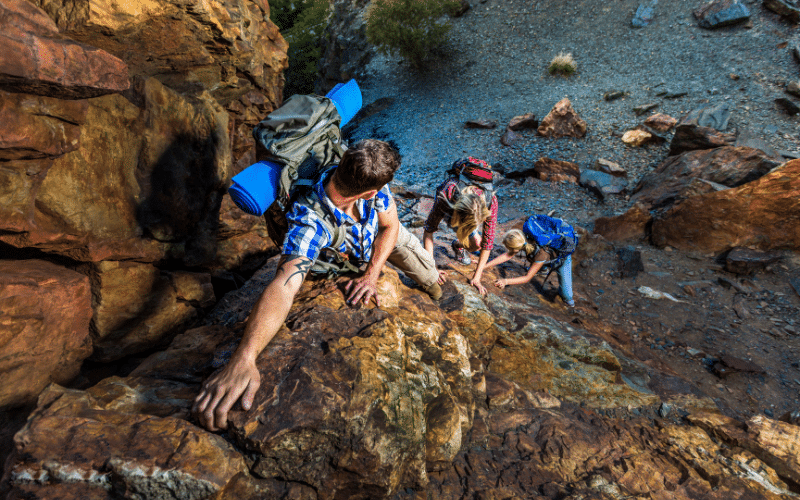
Climbing guides are essential for outdoor climbing teams, offering detailed information on routes, difficulty levels, and area-specific advice. They are crucial in planning safe and appropriate climbs, tailored to the skill levels of the team members.
#4 Portable Hangboards
Portable hangboards are vital training tools for strengthening climbers’ finger grip and upper body. They allow for targeted workouts that can be done almost anywhere, aiding in the continual improvement of climbing prowess within the team.
#5 Team Uniforms or Gear
Team uniforms or gear, such as matching climbing attire and helmets, foster a sense of unity and professionalism. They not only promote team spirit but also make it easier to identify members during group climbs and events.
Equipment for Facilities
#1 Climbing Walls (Indoor Facilities)
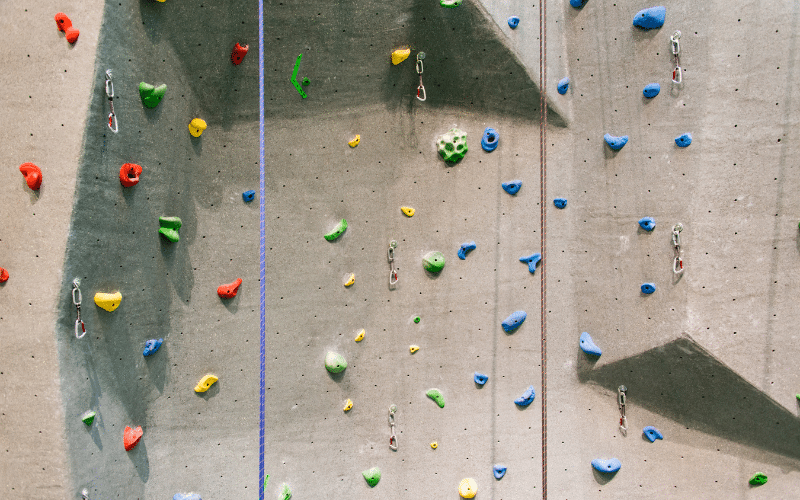
Climbing walls are at the heart of any indoor climbing facility. They provide a diverse range of routes varying in difficulty, sculpting a dynamic climbing experience for all skill levels. Without climbing walls, the fundamental practice of this sport indoors would be impossible.
#2 Bolts and Anchors (Outdoor Routes)
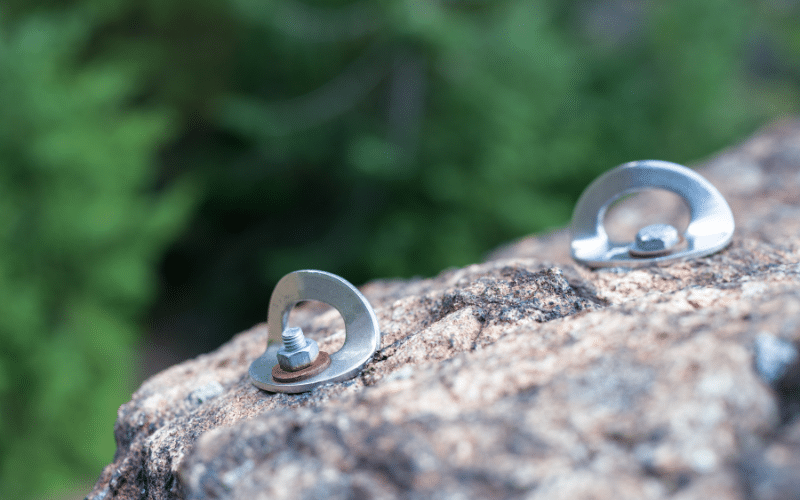
Bolts and anchors are critical safety components for outdoor climbing routes. They secure climbing ropes and serve as a lifeline for climbers, ensuring reliable protection against falls. Properly installed bolts and anchors are essential for the credibility and safety of any outdoor climbing area.
#3 Mats (For Bouldering Areas)
Mats in bouldering areas are essential for cushioning falls and minimizing the risk of injury. Providing a soft landing space, they allow climbers to attempt challenging problems with more confidence and safety — a fundamental safety measure for any bouldering facility.
#4 Ropes and Quickdraws (For Indoor Leading)
Ropes and quickdraws are indispensable for indoor lead climbing. They provide essential safety by allowing climbers to securely attach themselves to the wall as they ascend. Without them, the challenge and safety of lead climbing would be significantly compromised.
#5 Belay Devices
Belay devices are critical for the safety of climbers, allowing for controlled descents and secure holding of a climber’s weight in case of a fall. The right belay device ensures a smooth and safe climbing experience, making it indispensable for any climbing facility.
#6 Climbing Holds
Climbing holds are what transform a plain wall into a climber’s playground. They determine the route’s difficulty and can provide either a comfortable grip or a challenging obstacle. They’re vital for simulating outdoor rock features and keeping indoor climbing engaging and diverse.
#7 Rest Area
Rest areas provide climbers and visitors with a place to relax, socialize, and recover between climbs. They enhance the overall atmosphere of the facility and cater to the community aspect of climbing, making them essential for a complete climbing experience.
#8 Locker Rooms
Locker rooms offer climbers a secure space to store personal belongings and change before and after their climbing sessions. They contribute to the accessibility and comfort of the facility, making them a necessity for providing a full-service climbing environment.
#9 Equipment Rental Desk
An equipment rental desk is crucial for new climbers who may not own their gear or for those looking to try out new equipment. It expands access to the sport, ensuring that climbing can be experienced by a wider audience, regardless of individual gear ownership.

FAQ
What is the equipment you need to play Rock Climbing?
Climbing shoes, a harness, a helmet, and a belay device are the equipment you need to play rock climbing. This gear helps ensure safety and improves performance.
What is the most important equipment in Rock Climbing?
The climbing harness and helmet are the most important equipment in rock climbing, crucial for safety and enabling climbers to ascend and descend safely.
What is a recommended list of Rock Climbing equipment for beginners?
Here’s a recommended list of rock climbing equipment for beginners: climbing shoes for good grip, a comfortable harness, a sturdy helmet, a belay device, and a chalk bag for grip assistance. These items are fundamental for new climbers to start learning the sport.















